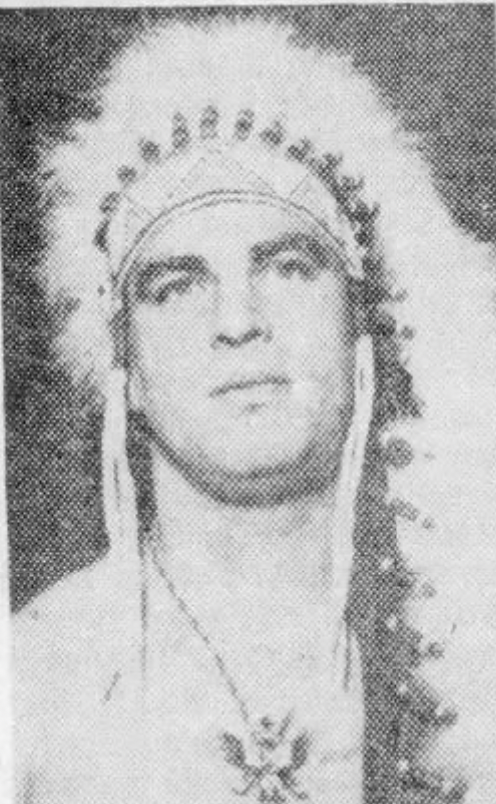By the time Nellya Baughman laced up—or didn’t, in her case—for her first match, the squared circle had already met its share of tough broads and tougher breaks. But in 1953, a 5’6” firecracker from Bremerton, Washington, came cartwheeling into the business, barefoot, blonde, and hellbent on making wrestling a little louder, a little wilder, and a lot more airborne. They called her Judy Grable, but to the crowd, she was “The Barefoot Contessa”—and that wasn’t just a gimmick. That was gospel.
She wrestled like a bottle rocket with nowhere to go but up. Her feet kissed the canvas like it owed her money, and when she took to the air, gravity blinked. “The acrobatic blonde with the educated flying feet,” they called her. She preferred bruises over ballads and lived life like a match that never cooled down—screaming, spinning, and swinging until the final bell.
A Tomboy Among Wolves
Grable’s story didn’t begin with wrestling. It began in Grand Junction, Colorado, where she wrestled boys in high school and dreamed not of stardom, but of survival. With four brothers and a sister, life was competitive before she ever met a ring rope. After her family moved to Florida, she took her daredevil tendencies to the Ringling Brothers Circus. But the high wire didn’t care much for glamor or gravity. A fall later, she was back on solid ground and looking for a new kind of stage. One with ropes. One with blood.
She found it in Columbia, South Carolina, at the all-female wrestling school run by The Fabulous Moolah—a woman who trained wrestlers like a butcher preps meat. Grable walked in with circus muscles and walked out with a target on her back. The women in Moolah’s stable weren’t there for sisterhood. They were there to eat or be eaten.
Wrestling in a Man’s World
Judy Grable debuted as “Peaches Grable,” a name that sounded more like a pie than a piledriver. But it didn’t take long before she dropped the syrup and started serving knuckle sandwiches with aerial garnish. She wrestled through the NWA’s grimiest circuits, where the smoke-filled halls smelled like sweat and shattered dreams. In Boston, she feuded with her former trainer Moolah, a rivalry hotter than the lights overhead and twice as unforgiving.
In an era when women’s wrestling was more novelty than sport, Grable forced the conversation. She wasn’t just a sideshow attraction or a cheesecake poster girl—though her looks got her on “What’s My Line?” in 1959, where Groucho Marx flirted with the line between humor and harassment. No, Grable was a performer, a worker, a grappler who could take a bump and give one back with interest.
She lost the battle royal for the NWA World Women’s Championship to Moolah in ’56, but titles were never the full measure of her worth. This wasn’t about belts. It was about building something, one bump, one flip, one barefooted leap at a time.
The Acrobat With Bruised Heels
Watch old clips—if you can find them—and you’ll see what made her different. The barefoot approach wasn’t a gimmick for Grable; it was an extension of her style. She moved like a woman who forgot fear, springboarding off ropes like a gymnast with a grudge. Her feet weren’t protected, but they were weapons—flashing, slicing, darting through the air.
She embodied a chaos that couldn’t be trained into you. Moolah may have taught her the holds, but Grable added the art. Her flying dropkicks were kinetic poetry, and her backflips were middle fingers to gravity. She could wrestle dirty, wrestle clean, or wrestle circles around you. It didn’t matter. The crowd paid attention. They had no choice.
Off the Canvas
Behind the stage makeup and road miles, Judy Grable lived a life just as unpredictable. She retired in the late ‘60s, married a serviceman, and traded the ring for the quiet grind of education and elder care. She graduated in 1978, proving that reinvention isn’t just for actors and politicians. Later, she worked as a nurse’s assistant in a veterans home, showing that even a woman who used to fly needed a reason to stay grounded.
One of her daughters followed her into the business under the name Debbie Grable, but Judy herself stayed away from the spotlight. Maybe she’d had enough of it. Maybe she knew that being remembered isn’t about how many headlines you get, but how many skulls you cracked on the way up.
Legacy in a Business That Forgets Women
Judy Grable died in 2008 after battling diabetes, strokes, and Alzheimer’s—a slow fade for a woman who used to soar. But the business finally caught up. In 2011, the Professional Wrestling Hall of Fame inducted her. In 2017, WWE gave her a posthumous nod in their Hall of Fame Legacy wing. She deserved more. She still does.
Women like Grable built the scaffold on which modern stars now strut. Without her, there is no Lita, no Sasha Banks, no Bayley. There are no cage matches with women in the main event. She helped legitimize a side of wrestling that was often treated like eye candy—until women like her burned the sugar and showed their steel.
Final Bell
In a business full of gimmicks, Judy Grable was the real thing. She wasn’t just a beauty in boots or a pin-up with a pile driver. She was a barefoot trailblazer with a circus soul and a fighter’s heart. Her story isn’t just about championships lost or matches won. It’s about carving space in a world that wasn’t ready for you—and doing it barefoot, bruised, and grinning.
Grable once told a reporter that she preferred wrestling to the circus because “you land on people instead of the floor.” Maybe that’s how she wanted to be remembered—not as someone who fell, but as someone who landed on the world with both feet and dared it to move.

